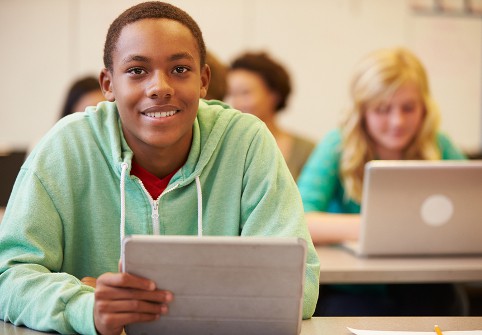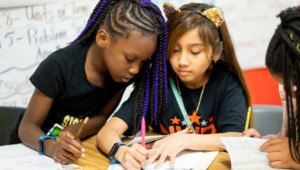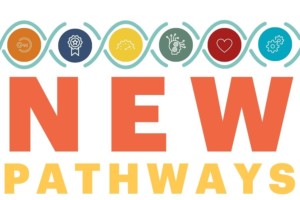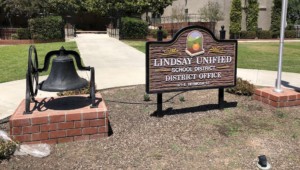The Perks of Personalized Pathways & Playlists

Personalized learning is the new meme in education. As noted in August, it will shape the next 20 years the way NCLB and standards-based reform shaped the last two decades.
Some wonder why personalization is worth the effort. For me, school visits have shaped my sense of what’s possible. And the evidence on personalized learning to pile up.
Others have moved on to the question of how to personalize learning. A school district personalized learning coordinator reached out looking for information on developing personal learning pathways and playlists for students. We asked around and got some great tips from and about two leading nonprofit providers of open education resources.
Mike Fauteux, math teacher at Leadership Public Schools, said personalized learning involves many components – a critical one is personalized playlists for students. By giving students relevant learning activities and letting them choose which works best for them based on preference, learning style, and individual goals, students are motivated to take control of their own learning. This is particularly impactful for students with more pronounced learning challenges such as English language learners, special education students, and students in need of remediation or extension.
Creating playlists also gives teachers the opportunity to develop their own professional practice by bringing up questions about where students have choice, where they work independently versus collaboratively, and how the teacher can use data to intervene and redirect the learning path.
Perhaps most exciting is how easy it is to share and build playlists with teachers everywhere! Teachers can collaborate using free tools like Gooru to use each other’s best content – spending less time creating and more time adapting and implementing. By sharing playlists and best practices across diverse communities, the potential for positive impact grows from within one teacher’s classroom to schools across the globe.
Another Gooru user said learning playlists positively impact both students and teachers by enhancing their roles in the classroom. For students, they increase coherence and personalize the learning process in powerful ways. A learning list gives students the big picture and lets them access resources from the past, present, and future as best fits their needs. Blending different learning resources and assessment types can allow students to learn and demonstrate their knowledge according to their individual preferences. This is particularly impactful for students with more pronounced learning challenges such as English language learners, special education students, and students in need of remediation or extension. Mix choice into the process and student engagement and agency flourish in profound ways.
For teachers, creating a learning list increases their effectiveness and helps them grow as professionals because building a list naturally brings up questions around practice. Where do students have choice? Where are they expected to work independently versus collaboratively? How can I as a teacher use data and new learning methods that go with lists to coach, intervene, and build relationships differently? How can the learning list integrate online and offline learning in meaningful ways? The point of a learning list isn’t to put students on autopilot, each with headphones and a computer, working without ever interacting. Rather, the clarity, access, and choice provided by a learning list creates opportunities to expand the roles of student and teacher in diverse, exciting ways that better meet individual student needs.
The secret to any approach is making sure that it serves educators where they are while providing opportunities for them to grow in new directions. A cutting-edge approach may be powerful, but if it is one-size fits all or there isn’t a clear way for an educator to see a path to use it, it’s often fated for limited impact. As such, the opportunity for learning lists to positively impact teachers’ professional growth is remarkable. Because of their flexible nature, learning lists meet teachers where they are in their practice and act as a bridge to explore new types of teaching.
For example, a teacher new to them may feel most comfortable having students work through a list together, with students benefitting from access to expanded learning and assessment types and a clearly expressed learning experience. However, the very same teacher might at some point ask, “What would happen if I let students move through this at their own pace?” or “How could I structure the list to maximize academic discussion to support language development?” Being flexible enough to act as a bridge between current and new teaching practices is the key.
Perhaps the most exciting aspect of learning lists is how easy it is to share or build them with colleagues anywhere in the world. Teachers gain opportunities to learn new approaches from others and be more productive by spending less time building and more time adapting and implementing. As such, when thinking about creating lists it seems necessary to consider the means to support sharing and collaboration to help educators address the twin challenges of how to sustainably create lists and use them best. Including in the planning process the thoughtful use of specific tools like Gooru that facilitate connection and collaboration around creation and use helps by making the process seem more feasible. Everything seems more doable when going through it with others. The potential positive impact on students and teachers at one’s own school is real. Stepping back, the potential for collective impact at a much broader scale using learning lists and a tool like Gooru is in many ways even more exciting.
Elisabeth Stock, PowerMyLearning, shared some useful resources:
- How to build and assign Playlist on PowerMyLearning Connect: Building Playlists Support Guide and Assigning Playlists Support Guide. Since PowerMyLearning Connect is free, teachers can build some playlists during a PD session and have a really hands-on experience.
- Benefits of playlists: A Two-Gear Construct for Envisioning Blended learning. This is a post describes how personalized instruction and student driven learning are the basis of effective blended learning implementation.
- Third-party resource on personalizing learning: A Step-By-Step Guide to Personalize Learning. This is an article our blended learning that our own consultants find useful.
Other resources on playlists:
- Summit Public Schools students progress at their own pace through playlists of content and take assessments on demand on the Personalized Learning Platform (PLP). See early reflections.
- 3 Steps For Creating Curriculum Playlists, Terry Heick
- Personalized Learning for Every Student with Highlight from EdElementsStep By Step Guide to Personalized Learning, Barbara Bray
Stay in-the-know with all things EdTech and innovations in learning by signing up to receive the weekly Smart Update.





0 Comments
Leave a Comment
Your email address will not be published. All fields are required.